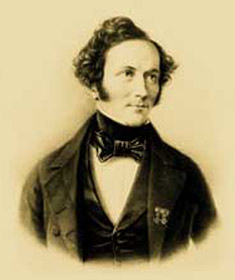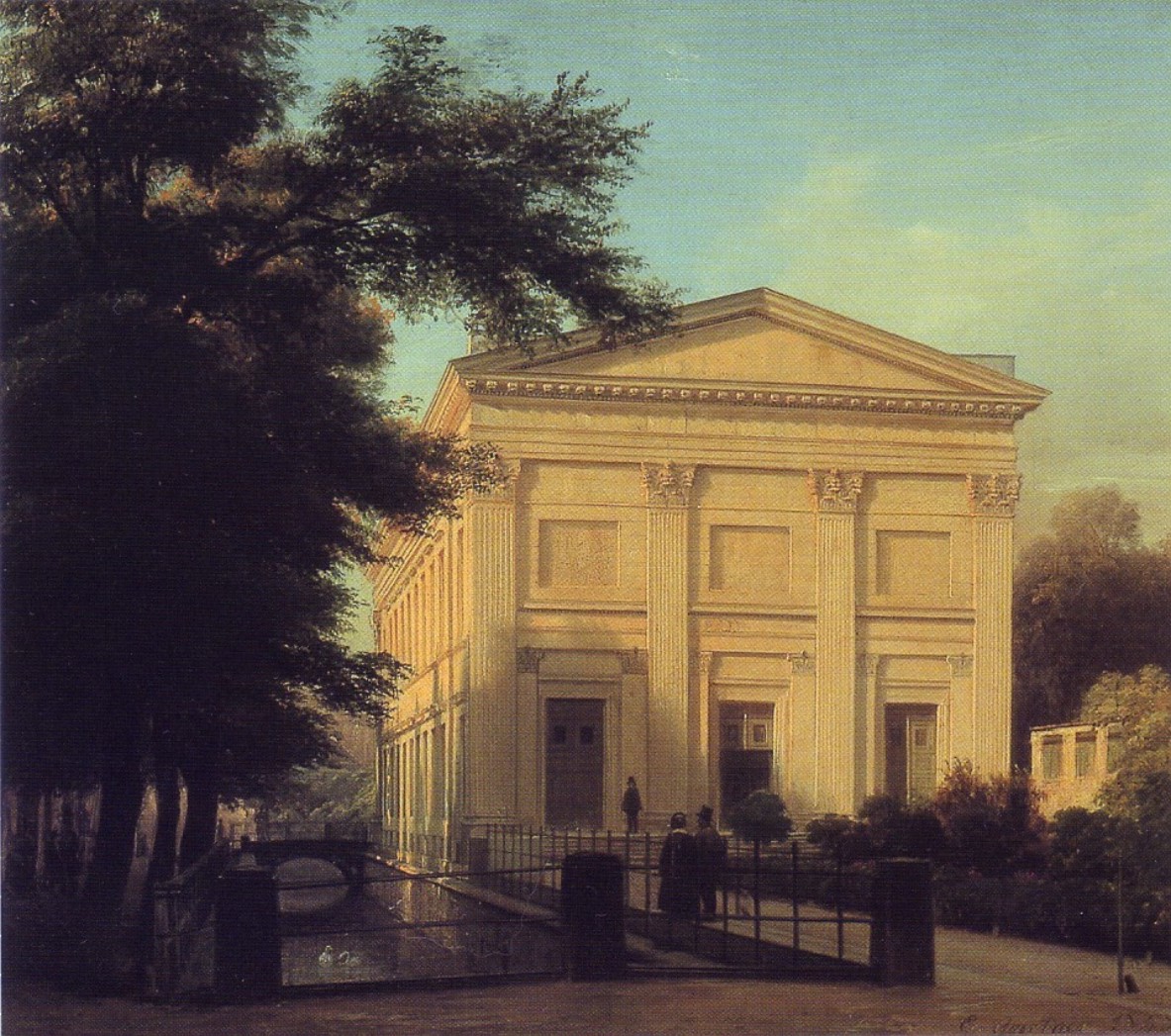Carl Theodor Ottmer on:
[Wikipedia]
[Google]
[Amazon]
 Carl Theodor Ottmer (19 January 1800,
Carl Theodor Ottmer (19 January 1800,
 He was the son of Johann Heinrich Gottfried Ottmer (1767–1814), a surgeon, and his second wife Elisabeth. He began his architectural training in 1816 at the Collegium Carolinum (now the
He was the son of Johann Heinrich Gottfried Ottmer (1767–1814), a surgeon, and his second wife Elisabeth. He began his architectural training in 1816 at the Collegium Carolinum (now the
 *1823–1824: Berlin,
*1823–1824: Berlin,
Memory Network: Biography
* {{DEFAULTSORT:Ottmer, Carl Theodor 1800 births 1843 deaths People from Braunschweig People from the Duchy of Brunswick Technical University of Braunschweig alumni 19th-century German architects
 Carl Theodor Ottmer (19 January 1800,
Carl Theodor Ottmer (19 January 1800, Braunschweig
Braunschweig () or Brunswick ( , from Low German ''Brunswiek'' , Braunschweig dialect: ''Bronswiek'') is a city in Lower Saxony, Germany, north of the Harz Mountains at the farthest navigable point of the river Oker, which connects it to the ...
– 22 August 1843, Berlin) was a German architect.
Life
 He was the son of Johann Heinrich Gottfried Ottmer (1767–1814), a surgeon, and his second wife Elisabeth. He began his architectural training in 1816 at the Collegium Carolinum (now the
He was the son of Johann Heinrich Gottfried Ottmer (1767–1814), a surgeon, and his second wife Elisabeth. He began his architectural training in 1816 at the Collegium Carolinum (now the Braunschweig University of Technology
Braunschweig () or Brunswick ( , from Low German ''Brunswiek'' , Braunschweig dialect: ''Bronswiek'') is a city in Lower Saxony, Germany, north of the Harz Mountains at the farthest navigable point of the river Oker, which connects it to the No ...
) and served an apprenticeship in the building department of the Duchy of Brunswick
The Duchy of Brunswick (german: Herzogtum Braunschweig) was a historical German state. Its capital was the city of Brunswick ().
It was established as the successor state of the Principality of Brunswick-Wolfenbüttel by the Congress of Vienn ...
. He was soon promoted and, from 1817 to 1821, received training from the Senior Architect, Peter Joseph Krahe. In 1822, he went to Berlin for further studies at the Bauakademie
The Bauakademie (''Building Academy'') in Berlin, Germany, was a higher education school for the art of building to train master builders. It originated from the construction department of the Academy of Fine Arts and Mechanical Sciences (from ...
, where he was under the direction of Karl Friedrich Schinkel
Karl Friedrich Schinkel (13 March 1781 – 9 October 1841) was a Prussian architect, city planner
An urban planner (also known as town planner) is a professional who practices in the field of town planning, urban planning or city planning.
...
. While there he became good friends with Carl Friedrich Zelter
Carl Friedrich Zelter (11 December 1758 15 May 1832)Grove/Fuller-Datei:Carl-Friedrich-Zelter.jpegMaitland, 1910. The Zelter entry takes up parts of pages 593-595 of Volume V. was a German composer, conductor and teacher of music. Working in his ...
, leader of the Sing-Akademie zu Berlin
The Sing-Akademie zu Berlin, also known as the Berliner Singakademie, is a musical (originally choral) society founded in Berlin in 1791 by Carl Friedrich Christian Fasch, harpsichordist to the court of Prussia, on the model of the 18th-century ...
. This friendship eventually led to the construction of a permanent building for that group.
He later refused an appointment as Court Architect in Berlin and spent the years 1827 to 1829 travelling through France and Italy. Upon his return, he married Cäcilie Abich (1808-1866).
After a major fire virtually destroyed the Brunswick Palace
Brunswick Palace (german: Braunschweiger Schloss or ''Braunschweiger Residenzschloss'') on the ''Bohlweg'' in the centre of the city of Brunswick (german: Braunschweig), was the residence of the Brunswick dukes from 1753 to 8 November 1918.
H ...
in 1830, he became the Court Architect for Braunschweig. In this capacity, he restored the palace and worked on many administrative, military and public projects. His style varied from Classical to Gothic
Gothic or Gothics may refer to:
People and languages
*Goths or Gothic people, the ethnonym of a group of East Germanic tribes
**Gothic language, an extinct East Germanic language spoken by the Goths
**Crimean Gothic, the Gothic language spoken b ...
, depending on the task at hand.
His last project, the Braunschweiger Bahnhof (train station), could not be completed before his death. Suffering from a lingering illness, he went to Berlin seeking a cure and died there. The station was completed from his plans (now lost) in 1845.
Major projects
 *1823–1824: Berlin,
*1823–1824: Berlin, Königsstädtisches Theater
Königsstädtisches Theater was the name of different theater buildings in Berlin in the 19th and 20th century.
The first Königsstädtisches Theater was built by Carl Theodor Ottmer in , a former settlement neighboring Berlin that is today par ...
on the Alexanderplatz
() ( en, Alexander Square) is a large public square and transport hub in the central Mitte district of Berlin. The square is named after the Russian Tsar Alexander I, which also denotes the larger neighbourhood stretching from in the nort ...
. (Demolished in 1932)
*1825–1827: Berlin, Berliner Singakademie, in consultation with Karl Friedrich Schinkel. Since 1952, it has been known as the Maxim Gorki Theatre.
*1829–1831: Meiningen
Meiningen () is a town in the southern part of the state of Thuringia, Germany. It is located in the region of Franconia and has a population of around 25,000 (2021).
, Herzogliches Hoftheater. (Destroyed by fire in 1908)
*1830–1838: Braunschweig, Brunswick Palace
Brunswick Palace (german: Braunschweiger Schloss or ''Braunschweiger Residenzschloss'') on the ''Bohlweg'' in the centre of the city of Brunswick (german: Braunschweig), was the residence of the Brunswick dukes from 1753 to 8 November 1918.
H ...
. (Severely damaged in World War II
World War II or the Second World War, often abbreviated as WWII or WW2, was a world war that lasted from 1939 to 1945. It involved the World War II by country, vast majority of the world's countries—including all of the great power ...
. Demolished and partially rebuilt in 1960. Façade reconstructed in 2006/2007 using salvaged parts)
*1835: Wolfenbüttel, Theater in the Schloß Wolfenbüttel. (Closed in 1903, later converted into classrooms)
*1838–1841: Fallersleben
Fallersleben is a part (''Ortsteil'') of the City of Wolfsburg, Lower Saxony, Germany, with a population of 11,269 (as of 2010). The village of Fallersleben was first mentioned in 942 under the name of ''Valareslebo''. Fallersleben became a ci ...
infantry barracks. (in Florentine style)Claudia A. Gronen:
*1839: Braunschweig: Villa von Bülow, now home to the Georg-Eckert-Institut für internationale Schulbuchforschung ( Institute for International Textbook Research)
References
Further reading
*Gerd Biegel, Angela Klein : ''Carl Theodor Ottmer 1800–1843. Braunschweigischer Hofbaumeister – Europäischer Architekt.'' Ausstellungskatalog zum 200 Geburtstag im Braunschweigischen Landesmuseum, Braunschweig 2000. *Peter Giesau: ''Carl Theodor Ottmer. Braunschweiger Hofbaurat zwischen Klassizismus und Historismus.''Deutscher Kunstverlag
The Deutscher Kunstverlag (DKV) is an educational publishing house with offices in Berlin and Munich. The publisher specializes in books about art, cultural history, architecture, and historic preservation.
History
Deutscher Kunstverlag was ...
, Munich 1997, .
*Rainer Theobald: ''Carl Theodor Ottmer als Theaterarchitekt. Untersuchungen zur Entstehung und Wirkung von Theaterbauten in der Epoche des Biedermeier.'' Dissertation, Freie Universität Berlin 1976.
* Dieter Ullmann: ''Chladni und Ottmer - ein frühes Beispiel für die Zusammenarbeit von Akustiker und Architekt.'' in: ''Acustica 71.'' 1990, Vol. 1, S. 58–63.
* Monika Lemke-Kokkelink: ''Wege zu Ottmer / 60 Stationen von Ahlum bis Zorge / Ein Führer zu den erhaltenen Bauten des Architekten Carl Theodor Ottmer (1800–1843), zu Stationen seines Lebens und zu Bauten seiner wichtigsten Schüler und Mitarbeiter zum 200. Geburtstag im Jahr 2000.'' Udo Gebauhr, Meyer, Braunschweig 2000, .
External links
Memory Network: Biography
* {{DEFAULTSORT:Ottmer, Carl Theodor 1800 births 1843 deaths People from Braunschweig People from the Duchy of Brunswick Technical University of Braunschweig alumni 19th-century German architects